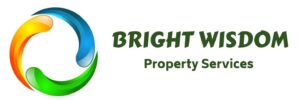最近澳洲统计局公布了人口普查的最新成果。
距离 2021 年人口普查的第一批数据发布已经过去了大约一周,我们已经看到了整个澳大利亚和新南威尔士州的数据,现在我们就梳理出一些suburb的有趣数据:

最高龄和最年轻的郊区
新南威尔士州的中位年龄为 39 岁,这意味着该州一半的人年龄小于 39 岁。
平均而言,该州的人口年龄略高于北领地Northern Territory (33) 和首都堪培拉 ACT(35) 的居民,但比南澳大利亚South Australia(41) 和塔斯马尼亚Tasmania (42) 的居民年轻。
最年轻的郊区是 Shortland-Jesmond 和 Chippendale,中位年龄为 28 岁。Camperdown-Darlington的中位年龄为 29 岁,该地区也是许多尚未结婚的人的理想家园。
最高龄的郊区是位于纽卡斯尔附近海岸的 Tea Gardens,中位年龄为 65 岁。
收入和住房成本
个人收入中位数最高的郊区是 Double Bay-Darling Point,那里一半的成年人每周收入至少 1690 澳元。排在第二位的是North Sydney-Lavender Bay,每周1683澳元。
个人收入中位数最低的郊区是 Ashcroft,每周 452 澳元。
对于整个新南威尔士州,个人每周收入中位数为 813 澳元,你的情况如何呢?
数据还显示了人们平均支付多少抵押贷款或租金。
新南威尔士州每月抵押贷款还款中位数最高的是 Hunters Hill、Castle Cove 和 Vaucluse,在这些地区,按揭还款中位数都在 4000 澳币以上,这些都是房价非常高的地区。相比之下,整个新南威尔士州的按揭费用为 2167 澳元。
在租金中位数方面,贝尔罗斯Belrose位居榜首,在那里,租金平均每周是885 澳元。
房产拥有情况
新南威尔士州 32.6% 的私人家庭住宅为完全拥有outright,33.7% 由抵押贷款人拥有,33.7% 由租房者拥有。
请注意,这里计算的是家庭住宅,而不是人数。如果是一个有六个人居住的出租共享房屋,则被计算一次;一个由自己居住的人完全拥有的公寓房也是如此。
自住者在 Tea Gardens 的家庭中所占比例最高(62.2%),而出租物业的比例最高的是 Chippendale(78%)。
这反映了每个郊区的主要年龄组——Tea Gardens 的年龄中位数是新南威尔士州所有郊区中最高的,而 Chippendale 的年龄中位数则最年轻;老年人更有可能付清房款,而年轻人则更有可能租房。
通常,当查看人口普查数据时,不同郊区之间的差异会归结为他们在年龄分布方面的差异。
Schofields-East 完全拥有房屋的人比例最低,这是因为这是一个较新的地区,其房屋是在过去十年左右建造的,并且由年轻家庭居住,他们的抵押贷款还要还很多年。
宗教
人口普查的一项重要发现是,澳大利亚基督徒的比例大幅下降,而勾选“无宗教”的比例却有所上升。
新南威尔士州的人口普查填写此问题的人中,51.3% 是基督徒,35.7% 没有宗教信仰,但这些百分比因州而异。
在悉尼西部的霍斯利公园Horsley Park,80% 以上的人口普查受访者是基督徒,主要是天主教徒。
你可以在离城市更近的地方找到人口普查中没有宗教信仰的人比例最高的郊区。
在Newtown大约 70% 的人口普查受访者是无神论者或不可知论者。
至于其他主要宗教:Lakemba 的68.2% 人口是穆斯林,Cabramatta 的 43.7% 是佛教徒,Pendle Hill 的 47.9% 是印度教,Dover Heights 的 43.9% 是犹太人。
健康问题
2021 年人口普查首次允许人们具体说明他们是否有任何长期健康状况。
Tea Gardens的关节炎患者比例最高,但它的人口也比该州其他地区的人口要老。
全国最常见的健康问题是抑郁或焦虑等心理健康问题,但在新南威尔士州,心理健康是仅次于关节炎的最常见健康问题。关节炎影响了新南威尔士州近 680,000 人,约占新南威尔士州填写此问题的人的 9.2%。

What we do in the suburbs: a deep dive into NSW's census revelations
CRAIG BUTTPopulous culture: latest learnings from the census. Illustration: Mark Stehle
It has been about a week since the first share of data from the 2021 census came out. We’ve already taken a look at what it shows for all of Australia and NSW, but now we can tease out what the data shows in each suburb.
OLDEST AND YOUNGEST SUBURBS
The median age in NSW is 39, which means that half of the state is younger than 39 while the other half is older.
On average, the state skews slightly older than residents of the Northern Territory (33) and ACT (35), but younger than people in South Australia (41) and Tasmania (42).
The youngest suburbs are Shortland-Jesmond and Chippendale, where the median age is 28. In Camperdown-Darlington, the median age is 29. These areas are all also home to many people who have not yet married.
The suburb that skews oldest is Tea Gardens, by the coast near Newcastle, where the median age is 65.
INCOME AND HOUSING COSTS
The suburb with the highest median individual income is Double Bay-Darling Point, where half of the adult population earns at least $1690 a week. Second on the list is North Sydney-Lavender Bay, at $1683 a week.
The suburb with the lowest median individual income is Ashcroft, with $452 a week.
For all of NSW, the median individual weekly income is $813.
The data also shows how much people pay in either mortgage repayments or in rent on average.
The highest median monthly mortgage repayments in NSW are in Hunters Hill, Castle Cove and Vaucluse. In all of these areas the median mortgage repayment is above $4000; all of these are areas with very high property prices. That compares with $2167 for all of NSW.
When it comes to median rent, Belrose tops the list. There, people spend $885 a week on average.
HOME OWNERSHIP
Statewide, 32.6 per cent of private households in NSW are occupied by people who own them outright, 33.7 per cent by people with a mortgage and 33.7 per cent by people who rent.
Keep in mind this is counting households, not people – a rented share house with six people living in it is counted once, as is a unit owned outright by a person living by themselves.
Owner-occupiers make up the highest percentage of households in Tea Gardens (at 62.2 per cent), while the highest percentage of rental properties is in Chippendale (78 per cent).
This is a reflection of the predominant age groups of each suburb – Tea Gardens has the highest median age of any NSW suburb, while Chippendale has the equal-youngest; older people are far more likely to have paid off their home, while younger people are far more likely to be renting.
Often, when we look at census data, the disparities between different suburbs come down to how much they differ in terms of their age distribution.
Schofields-East has the lowest percentage of people who own their home outright. This is because this is a newer area with homes that were built in the past decade or so and which are lived in by young families who have many years left on their mortgages.
RELIGION
One of the key findings in the census was how there had been a considerable drop in the proportion of Christian Australians and a rise in the percentage who ticked ‘‘No Religion’’.
In NSW, among the people who filled out this question on the census, 51.3 per cent are Christian and 35.7 per cent have no religion, but these percentages vary across the state.
In Horsley Park, in Sydney’s west, a little more than 80 per cent of census respondents are Christian, primarily Catholic.
You can find the suburb with the highest percentage of people who put down no religion on the census a little bit closer to the city.
About 70 per cent of census respondents in Newtown are either atheists or agnostics.
As for other major religions: 68.2 per cent of Lakemba’s population is Muslim, 43.7 per cent of Cabramatta is Buddhist, 47.9 per cent of Pendle Hill is Hindu and 43.9 per cent of Dover Heights is Jewish.
HEALTH ISSUES
For the first time, the 2021 census allowed people to specify whether they had any long-term health conditions.
Tea Gardens had the highest percentage of people with arthritis, but it also has a population that is older than the rest of the state.
The most common health issue nationwide was having a mental health condition such as depression or anxiety, but in NSW, mental health was second behind arthritis as the most common health issue. Arthritis affects almost 680,000 people in NSW, or about 9.2 per cent of people in NSW who filled out this question.

